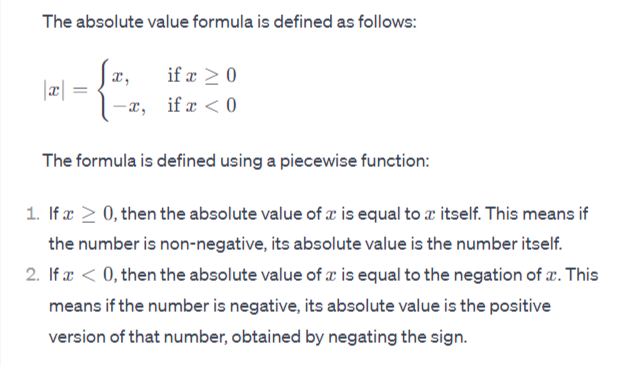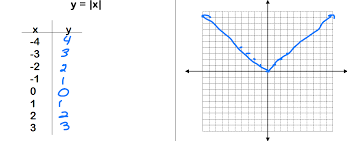Simplify your calculations with precision using our Absolute Value Calculator. An absolute value calculator is a simple yet powerful tool that helps you find the absolute value of any real number or mathematical expression. It ensures all values are positive, making calculations easier.
RESULTS
How the Absolute Value Calculator
Step One: Enter the Equation
- Type your number or expression into the input field (e.g.,
2-3+5/2*9).
Step Two: Click Calculate
- Press the Calculate button to process your input.
Step Three: View the Result
- The absolute value appears instantly in the RESULTS section.
Step Four: Check for Errors
- If there’s a mistake, the calculator will show an error message. Correct it and try again.
By following these steps, users should be able to easily and accurately calculate the absolute value of mathematical expressions using our Absolute Value Calculator. Enhance your mathematical precision with our Modulo Calculator. Seamlessly compute remainders for accurate results. Let’s understand the absolute value equations.
Understanding Absolute Values
Absolute value represents the distance from zero on a number line. Regardless of whether a number is positive or negative, its absolute value is always positive.
| Number | Absolute Value |
|---|---|
| -5 | 5 |
| 0 | 0 |
| 7 | 7 |
| -12 | 12 |
| 3 | 3 |
Absolute Value Formula
Absolute value plays a key role in many calculations where only the size of a number matters, not its direction. It helps build a strong foundation for more advanced concepts used in fields like engineering and economics. If you’re working with vectors, you might also find our Cross Product Calculator useful for precise calculations.
The general form of an absolute value equation
The general form of an absolute value equation looks like this:
F(x) = k + a |x – h|
Each component influences the graph:
- k shifts it up or down.
- h moves it left or right.
- a affects the height and flips it upside down if negative.
To solve these equations, treat the expression inside | | like any other number. If it’s negative, convert it to positive before proceeding. Absolute values always represent distance from zero, so the result is never negative.
How To Solve Absolute Value Equations
Solving absolute value equations involves breaking them into two simpler equations. Follow these steps:
- Identify the absolute value expression, e.g., |x| = 9.
- Rewrite it as two equations:
- x = 9 (positive case)
- x = -9 (negative case)
- Solve for x in both cases.
- Check both answers in the original equation to confirm correctness.
For more complex equations, such as |2x – 3| = 7:
- Split it into two cases:
- 2x – 3 = 7
- 2x – 3 = -7
- Solve each equation for x.
- Verify the solutions.
This method ensures all possible answers are considered, making absolute value problems easier to solve.
Examples of Absolute Value Expressions And Their Evaluations
| Expression | Absolute Value |
|---|---|
| -7 | 7 |
| 5 – (-2) | 7 |
| max(3, -8) | 3 |
| |x + 4| | Depends on x |
Optimize your binary calculations with our Binary Math Calculator.
Frequently Asked Questions
1. What is the difference between the Absolute Calculator and a regular calculator?
A regular calculator performs basic arithmetic operations, the Absolute Calculator specializes in calculating absolute values. It focuses on providing accurate distances from zero, irrespective of the sign of the input.
2. Does the absolute value calculator handle complex math functions?
Sure! This tool can work out things like sin(x) in trigonometry, polynomial multiplication, and even figure out derivatives or integrals.
3. Is there any privacy concern when using an online absolute value calculator?
Most calculators have a privacy policy to protect your information, so they don’t keep or share what you type in.
4. Is the Absolute Value Calculator accessible on mobile devices?
Most calculators have a privacy policy to protect your information, so they don’t keep or share what you type in.
Also Try


